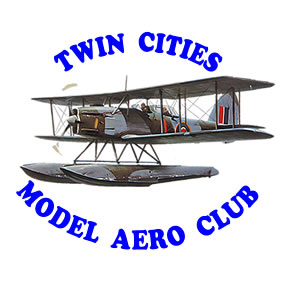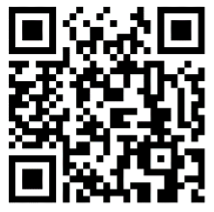Model aircraft flying has many categories that cater for the budgets and individual interests of enthusiasts. Whilst this page deals with getting started in powered radio control flight, there are many more ways in which you can enjoy the sport. With model aircraft you can experience the excitement of gliding, control line, free flight, slope soaring, indoor electrics, scale, seaplane, pattern flying, pylon racing and helicopter flying, Each of the these disciplines are regularly on display at our club. A visit to our club flying field to observe the different type of aircraft in flight, will be a good start.
SHOULD I JOIN A CLUB?
The Civil Aviation Safety Authority (CASA) is the governing body of air safety in Australia and you as the operator of a model aircraft are bound by its legislation. You cannot fly model aircraft in public places such as parks and schools etc. Infringements and penalties are severe for offenders. The beginner would be well advised to join a club which will provide all the facilities to make sure model flying is enjoyed to the fullest. Learning to fly is definitely not a “do-it-yourself” exercise. Our club has instructors willing to devote their services at no charge. The instructor is the newcomer’s best insurance against costly crashes whilst learning to fly. More important however, is the fact that club members are covered by insurance, in the event of damage or injury caused by their models. Twin Cities’ also provide social events, construction advice and contests.
HOW LONG WILL IT TAKE ME TO LEARN?
No set time can be allowed for learning to fly. Everyone learns at a different rate. Children generally learn to fly much more quickly than adults. As a general guide from the experience of many people who have learned in the past, if you practice for say four flights on one day of each week, allow no less than six weeks to fly solo. It may take longer depending on an individual’s abilities. There is no fast or easy way to learn how to fly, it is a skill that cannot be begged, borrowed, or stolen, only practice will make perfect.
To successfully fly solo you need to demonstrate basic aircraft knowledge and safety. Take off, trim the aircraft, complete a figure of eight, a procedure turn and land successfully.
WHAT ARE THE PARTS OF A POWERED MODEL AIRCRAFT?
A model aircraft has basically the same parts of a full size aircraft except that the pilot is not located in the cockpit but operates the controls remotely by radio. A model aircraft has a body called a fuselage and this provides a means of connecting the engine, main wing and “tail feathers” together. The major component of an aircraft is the wing and it is this part alone that does all the lifting and flying. Most wings have ailerons and these are used to turn or bank the aircraft in normal flight. The rear wing or horizontal stabiliser provides for a means of controlling the flying level and by use of the attached elevator the aircraft can be made to pitch up or down. The tail or vertical stabiliser provides for straight flight or yawing using its attached rudder whilst taking off and landing. The engine and propeller provide the forward drive of the aircraft and this in turn provides airflow over the wing and creates lift. The radio control has several components. The first is the Transmitter or TX and this has various levers which the pilot uses to control the aircraft. The second is the Receiver or RX and this is located on board the aircraft. It is powered by a Ni Cad battery pack also on board. The transmitter on the ground sends signals to the receiver in the air which interprets the signals into messages to control little electric motors called servos attached to the receiver by electrical cables. These servos mechanically move push rods connected to the various controlling surfaces. The transmitter generally has a range far exceeding the ability of the ground pilot to see the plane.
WHAT TYPE OF PLANE DO I REQUIRE?
Something that is easy for an expert to do may be very difficult, or even impossible, for a learner. The motto, “Learn to crawl before you try to walk”, must be heeded here. Most beginners are idealistic, and wish to build a model that looks like the real thing; like a scale model Spitfire. Such a model is to be avoided, because, while it may be fulfilling a dream it will almost certainly be too difficult for the learner to fly. There are many trainer models designed specifically for the needs of the beginner. A trainer aircraft may not look the part of a Spitfire, however, it is generally slow flying, gentle, forgiving, and well within the flying capabilities of the learner. A high wing model, with plenty of dihedral, is generally favoured.
Today, you have the advantage of going either with a Glow or Petrol engine or Electric motor.
Some of the Trainer packages available in the Electric setup are quite easy to fly and some have inbuilt systems such as Safe Mode and Panic Mode which allow the model to return to straight and level flight should you find yourself in an out of control situation. Now these systems won’t necessarily save a crash all the time, but it certainly allows for the opportunity to save the model from a crash situation.
Most of the Trainer packages are a foam model in a ready to fly setup, which appeals to many new pilots.
The best advice that can be given is to visit your local hobby shop (check our Sponsors page) and talk to the staff who will ascertain the best way to go in each case, and provide you with options according to your desires and budgets.
If you want to talk to a club member about what you need to do, come along to the club and make yourself known, anyone will be glad to point you in the right direction.
The main club day is Sunday mornings between 9 and 11am.
WHERE TO FROM HERE?
- Come to the club and introduce yourself as a prospective member.
- Ask for a committee member to show you around.
- Arrange a trial flight with one of our instructors using the club trainer.
- If you believe that this sport is for you, make an application to join by clicking the link or scanning the QR Code below (or the one in the clubhouse) and completing an application form.


